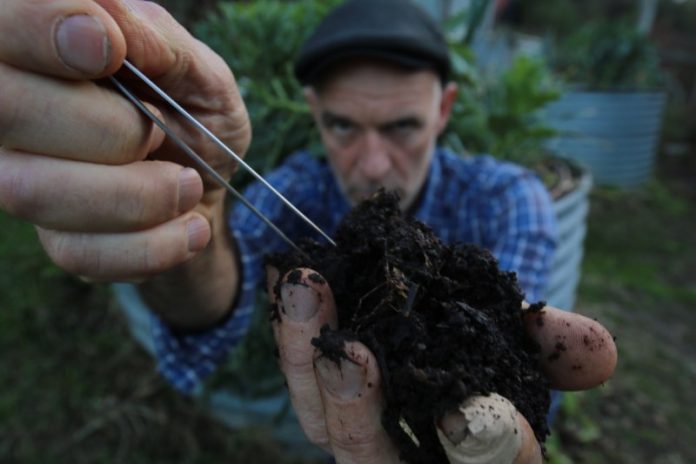Gardeners who are tuned in to the benefits of healthy soil probably know the term ‘humus’ and likely have a sense of what soil with this quality feels like; rich, moist, almost ‘greasy’ in quality.
The problem is, it is possible humus, as a substance, does not exist at all!
In the early years of soil science, many experiments were designed and performed to try to isolate, name and understand all the elements and compounds that make up what we call soil.
One experiment done in 1786 used a strong alkali solution to ‘wash’ a particular substance out of healthy soil samples. This dark, amorphous substance got called ‘humus’.
For many years, the dark sticky substance produced in this kind of experiment has been prodded, poked and studied. Although it can be divided into three acids (humic, fulvic and humins), little further understanding of what it is or how it works in soil came to light. In fact, humus seemed to defy almost everything, including ageing or decomposition, leading some to suggest that humus, once made in soil, is extremely long lasting.
However, more recent research is suggesting that the dark substance we have been calling humus for nearly 240 years might actually be a product of the experiment itself, existing in the lab, but not in soil. The three acids extracted from this substance (humic, fulvic and humins) do seem to occur naturally in healthy soils and are the subject of ongoing research. Living soil will continue to keep us asking questions.
No longer having to account for how the complex mystery substance ‘humus’ suddenly formed out of nowhere, a different view is emerging, seeing decaying organic material on a continuum, with fresh and un-decomposed material at one end, and fully decomposed and integrated matter on the other. Think of a big log of wood at one end of the spectrum and a load of dark, rich compost at the other.
Both these examples have a substantial amount of carbon in them (drawn from the atmosphere by photosynthesising plants) but the compost is going to feed our soil and plants in this growing season and beyond, whereas the log will take years and years to decompose and to be integrated into the soil and available to our plants.
This fits much better with many gardener’s intuition about these things, that not every form of organic material is equal to each other and that good rich compost (whether it contains the fabled ‘humus’ or not) is still one of the best way to build our soil, feed our plants and integrate more carbon into our garden.
– Joel Meadows works with *Yes In My Back Yard, (YIMBY), a community-scale composting initiative in Castlemaine and surrounds. Send questions or comments to hello@yimbycompost.com, or to book in for a compost workshop.








